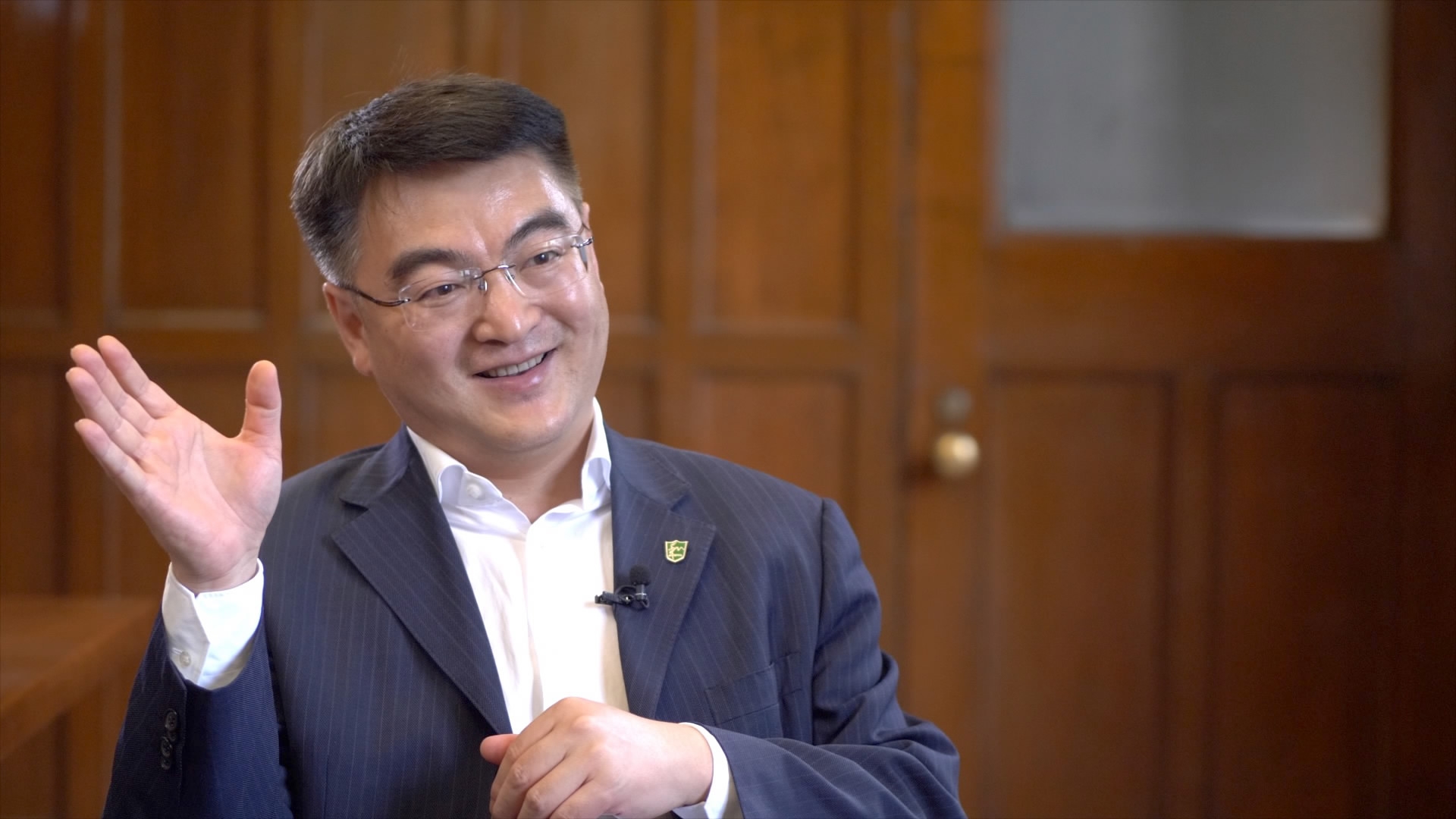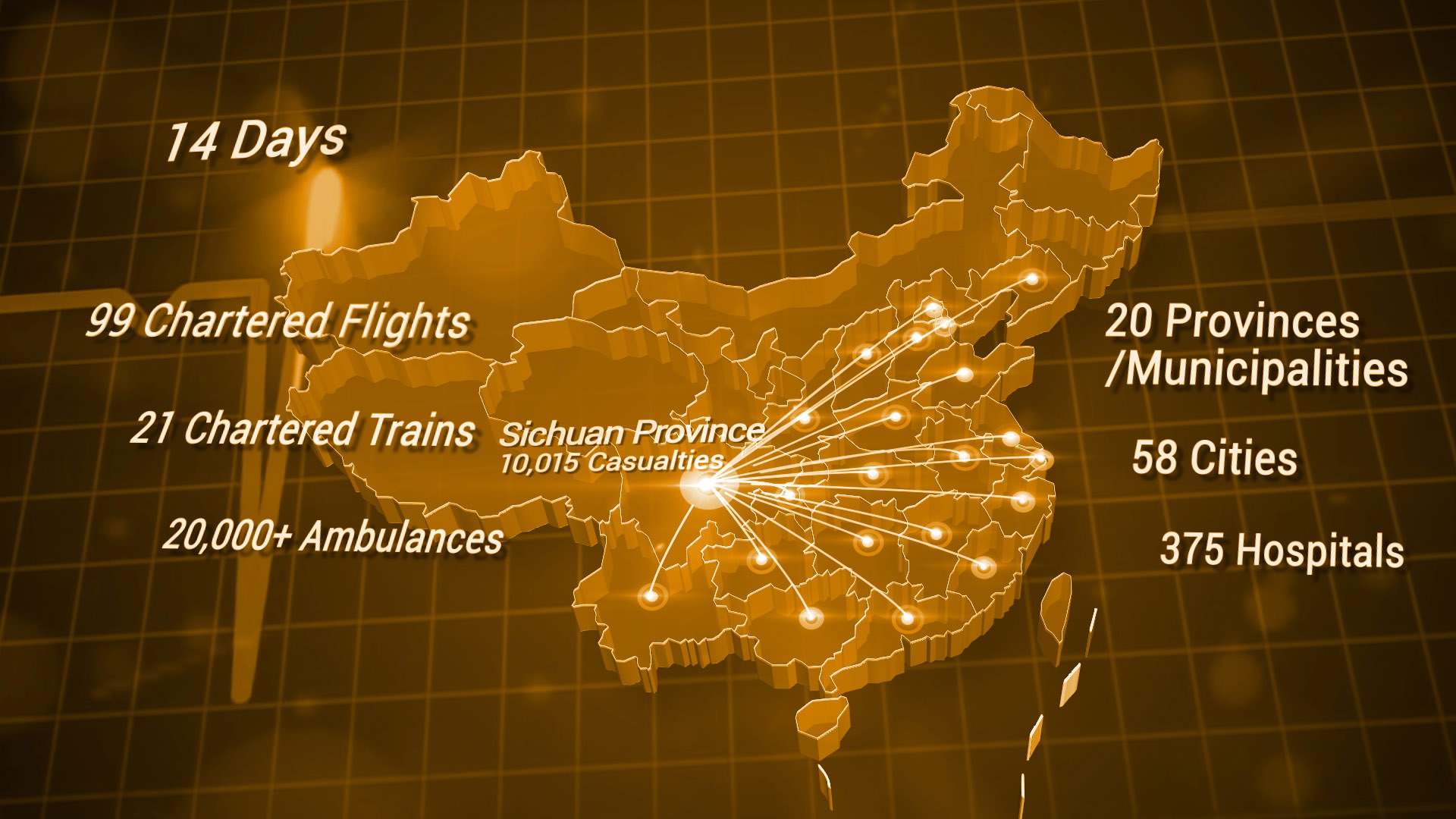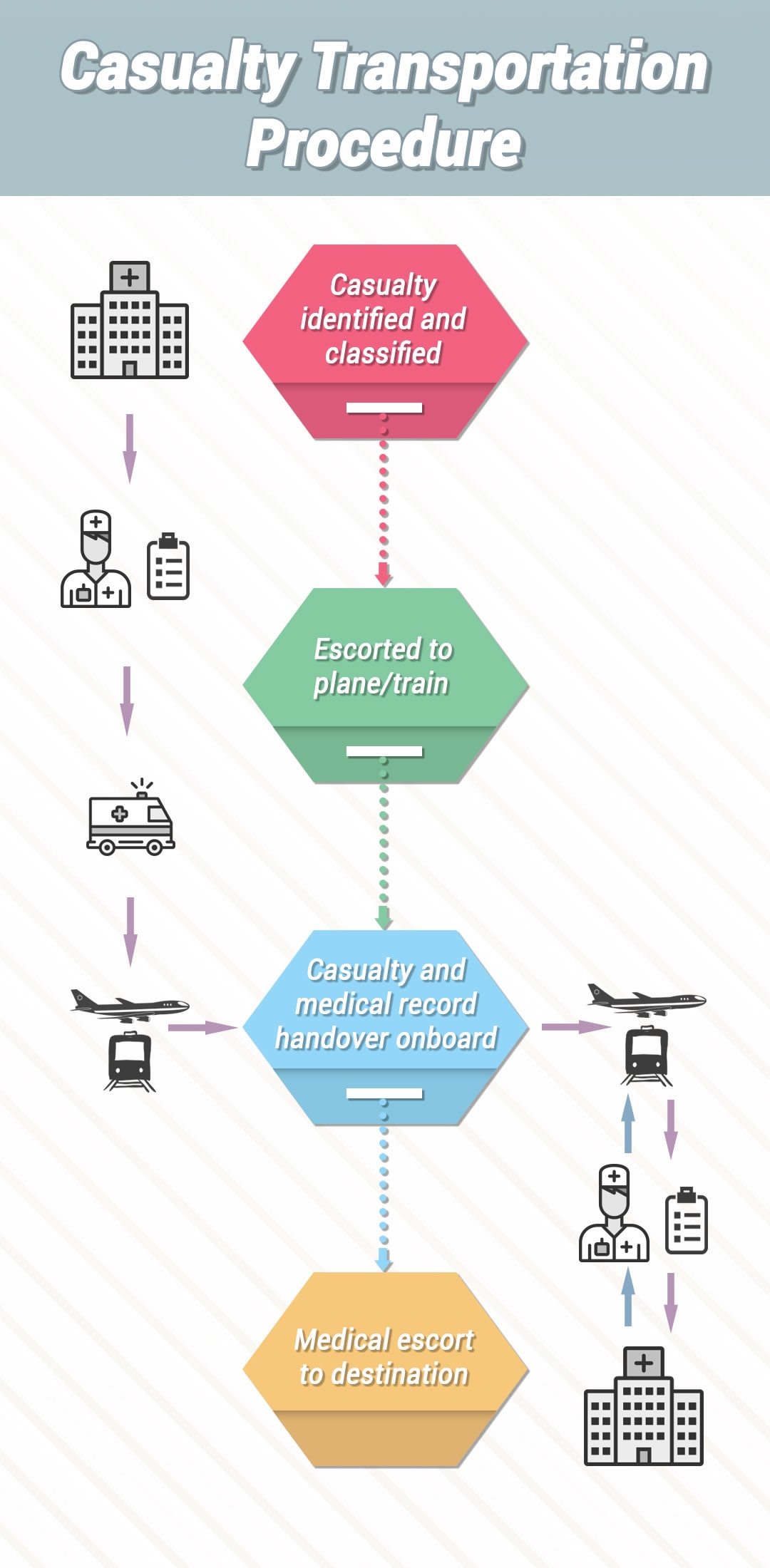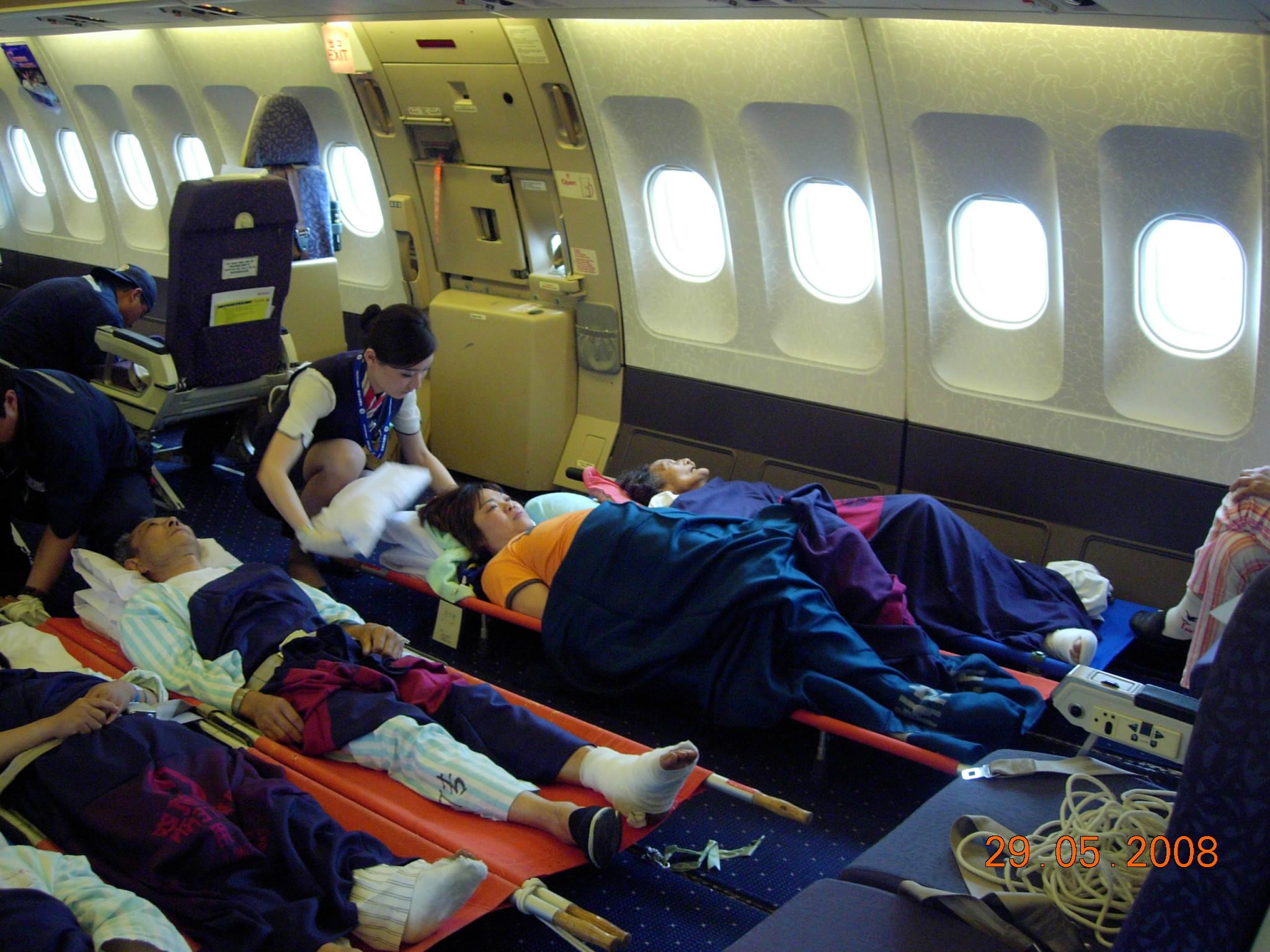
China
23:07, 11-May-2018
Meet the man behind the largest transportation of peacetime casualties
Chen Ran/Yang Xinmeng/Qi Jianqiang
04:24

A call in the middle of the night is normally annoying. But for 52-year-old Dr. Zheng Zhongwei, one such call 10 years ago changed his future in the most unexpected way.
At 1:40 a.m. on May 18, 2008, Zheng got a phone call asking him to join a post-quake medical rescue operation. "I will never forget that very moment in my entire life," he told CGTN.
It was the sixth day after a devastating 8.0-magnitude earthquake struck southwest China's Sichuan Province on May 12, leaving tens of thousands dead or injured, and millions displaced with infrastructure severely damaged or ruined.
The epicenter was only 85 km away from the provincial capital where Zheng was based as the president of the Institute of Blood Transfusion under the Chinese Academy of Medical Sciences.
Make it happen
In fact, transporting casualties out of the area had started minutes after the quake occurred. A total of 569 casualties had been transferred to the neighboring Chongqing Municipality from May 12 to 17 before the casualty transportation team was officially formed.
Zheng was assigned to lead the casualty transportation from quake sites in Sichuan to 20 other provinces or municipalities nationwide, a logistical feat that was unprecedented in Chinese history.

Statistics of casualties transported in Sichuan Province / Source: Sichuan provincial health bureau
Statistics of casualties transported in Sichuan Province / Source: Sichuan provincial health bureau
Zheng said he had thought about transporting the injured to less-affected areas, as the quake-hit zone lacked medical staff and facilities. "My biggest challenge was I couldn't find any resources online for this task," he recalled. "But it was still inspiring to see that the central government had made rescue operations nationwide."
The 29-member team was divided into groups specializing in transfer planning, coordination, supervision and data management. They designed a work flow to ensure that all the 10,015 identified casualties, most of whom had never been outside of Sichuan, were transferred door-to-door safely.
More specifically, the team coordinated and supervised local health bureaus as well as civil aviation and railway transportation departments to carry out the transfer, and established a casualty transport database with real-time reporting.

Casualty Transportation Procedure
Casualty Transportation Procedure

File photo taken on May 29, 2008 shows the interior of a chartered plane filled with casualties about to be transferred. The airline removed its seats to make room for stretchers. / Courtesy of Dr. Zheng Zhongwei
File photo taken on May 29, 2008 shows the interior of a chartered plane filled with casualties about to be transferred. The airline removed its seats to make room for stretchers. / Courtesy of Dr. Zheng Zhongwei
Zheng said he was deeply impressed by the strong coordination and implementation of different systems. For instance, the chartered planes removed their seats to make room for 33 stretchers at a time. Moreover, the chartered air-conditioned trains replaced windows that were completely enclosed to allow stretchers to come onboard. Some transfer destinations even sent their own medical teams to the quake zones to pick up casualties at the scene so that the designated ambulances could stay there for local use.
Upon knowing the last batch of casualty transfers had left on May 31, Zheng and his team were relieved as they were able to complete the "mission impossible" in 14 days.
More importantly, there were no reports of death from the 10,015 casualties due to quake injures during their transfers to 375 hospitals nationwide. Some even received treatment for pre-existing, unrelated diseases. Transportation and medical treatments were free of charge.
"What we've done still makes me feel proud today! And I think it was the love and support from across the country that made all of this happen," Zheng stated.
The lasting legacy
If he was not assigned to help coordinate the casualty transportation, Zheng would have volunteered to perform surgeries for the injured given his decades-long orthopedic background in underdeveloped areas in Sichuan.

Zheng Zhongwei (c) takes a field trip to Qingchuan County, one of the worst-hit quake zones in southwest China’s Sichuan Province, May 14, 2008. /Courtesy of Dr. Zheng Zhongwei
Zheng Zhongwei (c) takes a field trip to Qingchuan County, one of the worst-hit quake zones in southwest China’s Sichuan Province, May 14, 2008. /Courtesy of Dr. Zheng Zhongwei
"For me, joining the casualty transportation team was probably more meaningful than conducting surgery in operating rooms," Zheng noted.
The 8.0-magnitude earthquake, in Zheng's eyes, was a test and also a motivation tool for the country's emergency response management, particularly for its public health rescue system. The absence of protocol and the lack of relevant experience were big challenges to every rescue participant, including himself.
Fortunately, the emergency protocol of Zheng's team for casualty transportation played a vital role in other major post-quake relief efforts domestically and internationally, such as the one for the 8.1-magnitude earthquake in Nepal in 2015.
In 2015, Zheng moved to Beijing to work as the vice president of the Chinese Academy of Medical Sciences and Peking Union Medical College.
Zheng chose "self-confidence" to mark the 10th anniversary of the disaster, as he believes the term best demonstrates the faces of China both nationally and internationally.
With help from the national counterpart assistance scheme, the quake zones started the recovery projects within a short period of time and new residential complexes, office buildings and other infrastructure including roads, schools and hospitals soon began to pop up.
"What's more inspiring is the invisible changes in people's mentality I felt whenever I went back there," Zheng said. "See things positively!"

SITEMAP
Copyright © 2018 CGTN. Beijing ICP prepared NO.16065310-3
Copyright © 2018 CGTN. Beijing ICP prepared NO.16065310-3